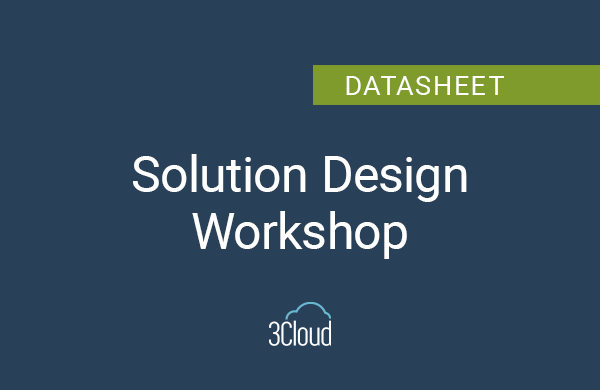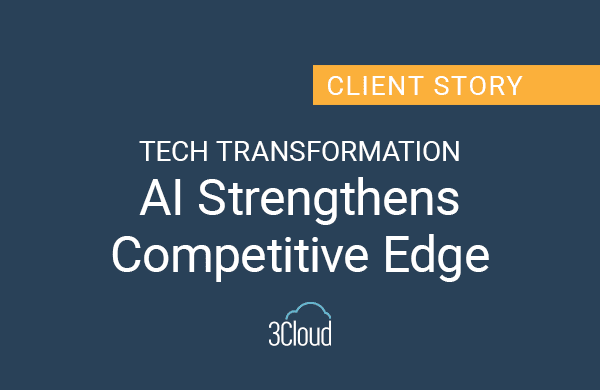Senior leaders at startups are known to spend as much time on business processes as on technology products. Conventional wisdom holds, however, that as an organization matures you move away from that early focus on process, or that the methodologies adopted will prove difficult to scale and you’ll have to adopt new ones. In truth, the Scaled Agile Framework (SAFe®) makes Agile at scale more than possible, and it also means your organization can take advantage of the benefits of an Agile transformation at any stage and any size.
As you do so, you’ll want to avoid what those of us at 3Cloud call the Agile transformation trough of despair. This is the point at which most organizations consider their transformation to be a failed initiative, and some go right back to doing things the traditional way and living with all the old problems that entails. Below, we’ll plot the trough of despair, explore how it happens, and give you some simple steps for avoiding it and keeping your adoption of modern organizational processes on track.
How Most Organizations Start Their Transformation
Agile transformations can be undertaken for a myriad of reasons. Perhaps you’ve missed some major deadlines and are looking to break down boundaries between functional silos, unlocking efficiencies and allowing your team to deliver faster. Or, you may be keeping an eye out for technological disruptions in your industry (think ride-sharing apps and traditional car services), and looking for ways to ensure you can innovate going forward.
Regardless of the reason, the changes that will be required to transform your organization are largely the same. There are organizational changes, roles to be created, incentive plans to be reworked, financial planning to be re-evaluated, and, of course, training for your teams.
Most organizations make the mistake of starting there, with the teams. They believe that a bottom-up transformation, with support at the top from key roles like the CIO, CTO or even a manager, will work. Let’s look at why this approach leads to trouble.
The original plan may be put together by the manager, who has been tasked with the transformation but isn’t fully empowered to understand what they’ve been asked to do. The people across the top of the business, who want that famed 35% increase in productivity, don’t understand how it involves them. The manager starts planning as with any other project, perhaps building out an MS Project plan in excruciating detail from start to finish. The plan has a lot of goals that may or may not be achievable. They start working with teams and have some degree of early success, leading to inflated expectations at the top, but as they go they also uncover a lot of the built-in problems that the organization hasn’t been acknowledging over the years.
As those problems go unaddressed, teams start to be discouraged and morale drops significantly. People stop reporting problems because they know nothing will be done about them. Teams revert back to what they’re used to and business as usual, and the initial Agile-driven success is long forgotten. This is how starting with teams leads to the trough of despair.
How SAFe Organizations Start
Now let’s imagine another approach: starting with leadership. If you want a transformation to stick, unlocking agility for your business long-term, you need to start with buy-in from the entire leadership team, from your board of directors down. This approach acknowledges that Agile is not merely a matter of changing the way your technical teams work; it’s about changing the way the whole organization operates. The teams are actually the easy part, but as outlined above the changes made within those teams will inevitably uncover hidden problems they encounter on a daily basis. It requires work from the people at the very top to clear those problems up. If they’re bought-in to an Agile mindset from the start, you go in expecting those problems and avoid the trough.
Besides being prepared to address blockers, an Agile transformation should also start at the very top of the organization by encouraging leaders to adjust their style and approach. They should embrace values of empowerment, psychological safety, safety to fail, optimizing the whole, intent-driven leadership, and more. These changes alone will reap benefits for any organization. They’ll start creating company and product visions that will excite teams, making them want to come to work because they have a purpose.
The leaders will start to anticipate, on their own, problems that are inherent in the organization and start solving them. They’ll see how their structure is built to maximize efficiency in any one area, at the expense of making it more difficult to get things done overall. They’ll see the cost of centralizing command and not pushing decisions to the place where the information is. They’ll see that there is no chance of innovation without psychological safety and freedom to fail. Finally, they’ll recognize that by setting intent instead of directives, they are embracing the creativity of the entire organization rather than relying on a select few to come up with all the big ideas.
From this start at the leadership level, organizations embracing SAFe can start to share the transformation through to levels of middle management and their teams. Teams will get to see their leaders modeling new behavior and values, and they’ll be more receptive to changing how they’re thinking and behaving in turn. The teams will recognize this new space they’re given to start deciding how they’re going to solve issues, and as they see the changes, they’ll start stepping into a heightened sense of ownership.
Why External Agile Coaching Ensures Success
We’ve established that leadership buy-in is essential for a successful Agile transformation, but what’s an easy way to ensure you secure it? Who within the organization should be responsible for education leadership on the wider benefits of the transformation, the risks of not adopting it, and laying out the plan?
It can help immensely to find a qualified partner to coach your organization through this process. At 3Cloud, our coaches help clients put SAFe into practice incrementally, at the pace that works for them, only after establishing a clear roadmap and sharing it with business leaders. We also offer clients the option to go beyond training and coaching. If they choose to build a custom software product with us, or leverage our experience to modernize a legacy application, we can demonstrate the best of Agile for them up front while training their teams in the process.
By starting at the top of the organization with an experienced partner, you can avoid the trough of despair entirely and create lasting change within the organization. Plus, doing so will enable you to reap the benefits of Agile that go far beyond productivity. You’ll end up with an engaged and motivated workforce, filled with people who are eager to innovate and go the extra mile when necessary.




